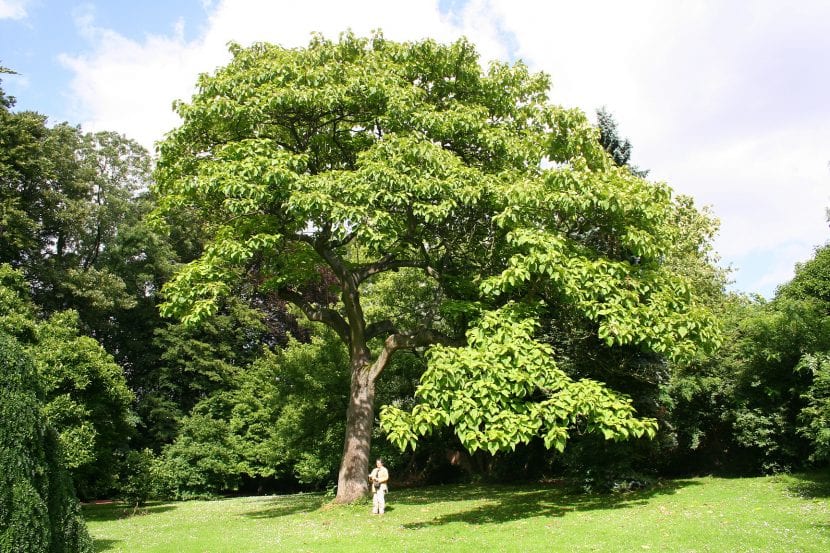
La Pawlonia it is a tree that has become very popular. It has a crown wide enough to shade a fairly large area of the garden, and it produces very pretty flowers. And all without receiving much care!
It is a very interesting plant that can be grown in temperate regions around the world.So if you are looking for a tree that is beautiful and under which you can have picnics or enjoy the garden, do not hesitate to read our special about this wonderful plant.
Characteristics of the Pawlonia
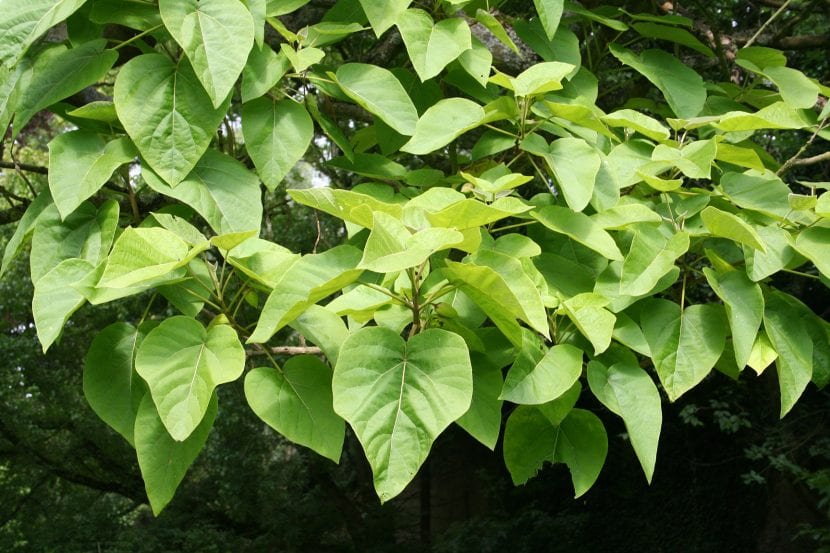
Our protagonist is a deciduous tree native to China known by the common names of Paulonia imperial, Pawlownia imperial, Kiri or, originally, mao pao tong. It is a fast growing plant that reaches a height of 20 meters. Its glass is wide, leafy and shaped like an umbel. The leaves are large, up to 40cm in length, with the underside that may or may not be hairy.
The flowers, which sprout in spring, are grouped in number of 3-4 in inflorescences that adopt a pyramidal or conical shape. They are purple. Once they are pollinated, the fruit begins to mature, which will end up being a 3-4,5cm thick viscous-glandular stormy ovoid capsule. Inside you will find the seeds, which will be very numerous and winged, with a size of between 2,5 and 4mm.
Has a life expectancy of 200 years, being able to reach 250 if the conditions are right.
How do you take care of yourself?
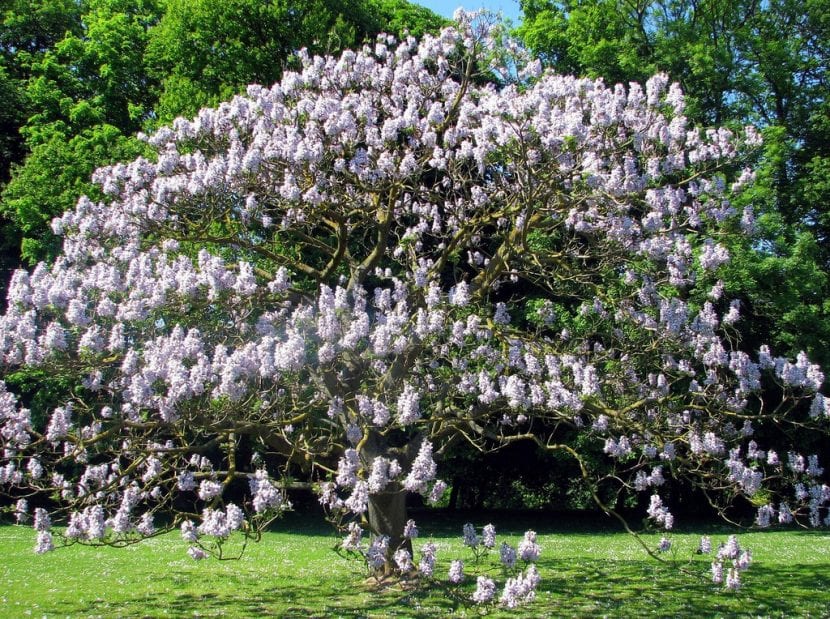
If you want to have one or more specimens, below we are going to tell you how to take care of them so that they are as healthy as the first day:
Location
Being a fairly large tree, must be placed outside in full sun or in semi-shade. Its roots are invasive, so it is advisable to plant it at a minimum distance of four meters from the wall or tall plants so that, in this way, you can get to see it in all its splendor.
Land
It grows in all types of soils, even in those of calcareous type (pH of 7). Of course, it is important that it has good drainage to prevent the roots from rotting due to excess moisture.
Irrigation
Does not resist drought. It has to be watered two or three times a week in summer and once or twice a week the rest of the year to prevent it from getting ugly.
Subscriber
From spring to late summer it must be paid with organic fertilizersas earthworm humus, manure o guano, either powder or liquid. If you opt for those that come in powder form, spread a layer about 2-3cm thick around the trunk once a month; And if you opt for liquids, it is important to follow the instructions specified on the package to avoid the risk of overdose.
Planting time
The best time to spend it in the garden is in spring, when the risk of frost has passed. It should be borne in mind that, although it withstands low temperatures well, during the winter when you are asleep it can be difficult for you to overcome the transplant.
Multiplication
The Pawlownia it can be multiplied by sowing its seeds directly in a pot during spring. You can also try planting semi-woody cuttings in pots with sandy substrates in that season.
Plagues and diseases
There are no known pests nor does it usually have diseases unless the growing conditions are not good, in which case it could be affected by cottony mealybug o White fly, which are eliminated with specific insecticides or with neem oil.
Very young trees can have fungal problems if they are watered excessively, so it is highly recommended to sprinkle copper or sulfur on the substrate in spring and autumn.
Rusticity
It is very rustic. It can withstand frosts down to -13ºC without being damaged.
Curiosities of the Paulonia
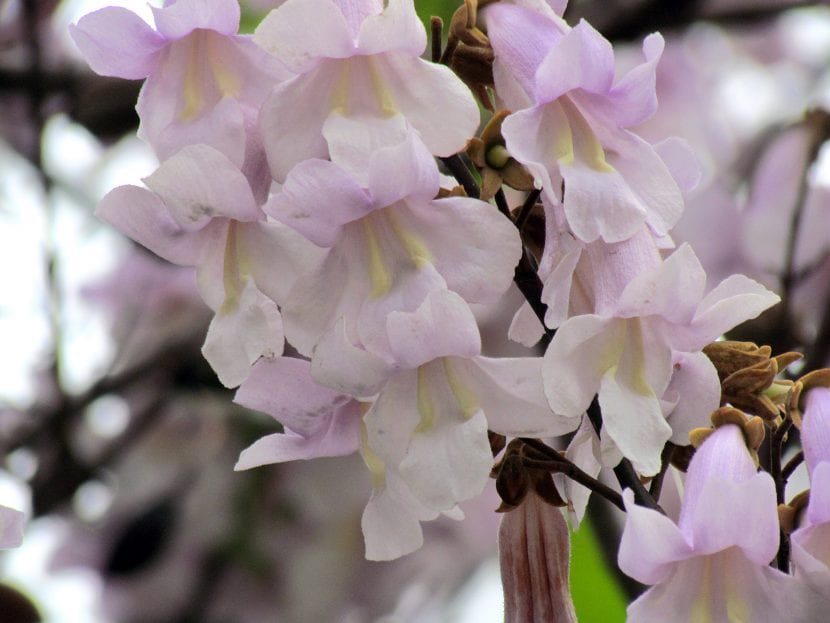
The kiri tree is a plant that gives very good shade, but it also has several very interesting curiosities. It is a vegetable that can survive fire easily, since its roots can regenerate, and as it also has a very fast growth in a short time it can become the plant it was before the fire.
The leaves are rich in nitrogen, one of the essential macronutrients for the proper growth of plants, so that when the time comes they can be used as natural fertilizer. What's more, gives very good shade, so it can be used as a shade tree under which to protect itself during the hottest days of the year.
Its roots prevent soil erosion, something that is especially interesting in areas where this is a major problem. And not only that, but they are well adapted to living on poor land.
Can you help us stop climate change?
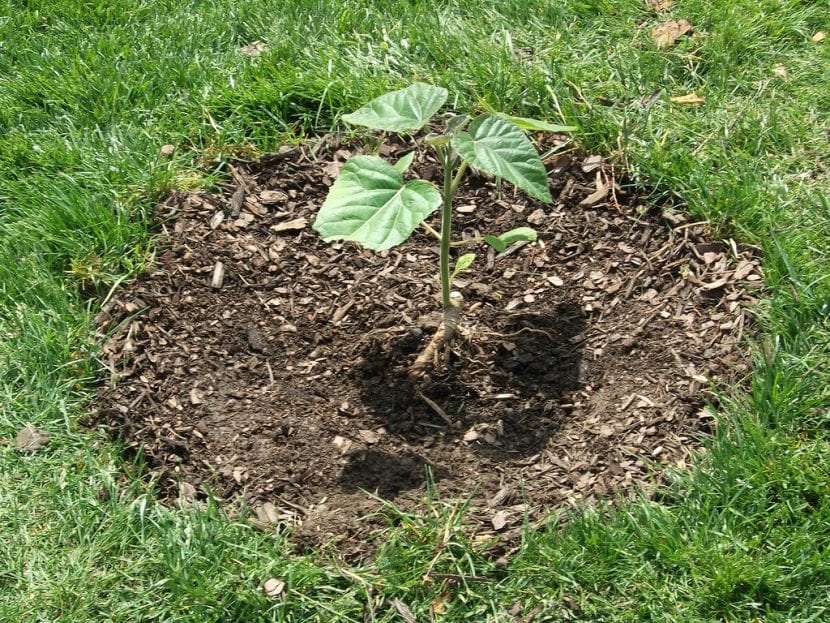
Although it is said to absorb up to ten times more carbon dioxide than other trees, we have not been able to find any scientific studies to confirm this. If there is someone who finds it, let us know.
hello good afternoon, night or day a great greeting what a good blog a question regarding this tree how feasible it is to make bonsai
Hello Jesus.
Good afternoon from Spain 🙂
Pawlonia has leaves too large to be worked as bonsai. Even so, with fertilizers poor in nitrogen and pruning, its size can be reduced a little ..., but they would still remain large.
To make bonsai it is best to use small-leaved trees, such as elms or zelkovas.
A greeting.
The Pawlonia is a forest tree that has "misleading advertising" as the saving tree of the world, etc etc ... and is yet another of the inventions of some Chinese or Spanish laboratory. There are pages of "kiri" or pawlonia that really suck, because they are sterile clones with a commercial patent, that is, you give space to a transnational to do its business (PRODUCTIVE COLONIALISM), disguised as "ecological". Chinese hybrids are not sterile and therefore can be dispersed in forests ... with the damage that this implies. don't be fooled by the media. Plant native to the area in which it lives, they are the best adapted to its climate, the introduced species only take care of draining resources, such as water.
Hello Roberto.
Right, that's what I think. Too much publicity is being given to a tree that it really is not as "all-rounder" as they say. In addition, it needs a lot of water to be able to feed the leaves, so it should never be planted in climates where rainfall is rather scarce.
A greeting.